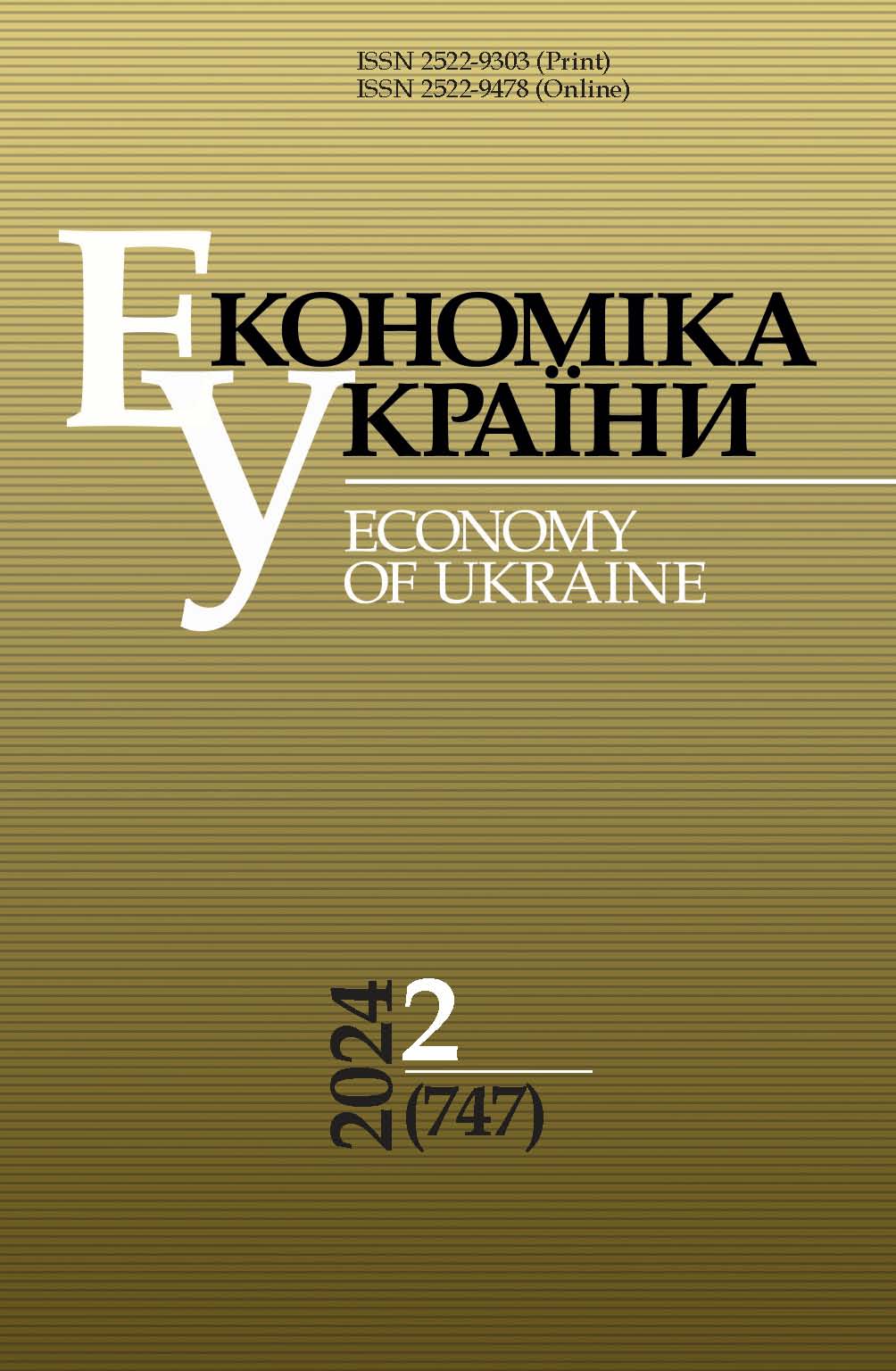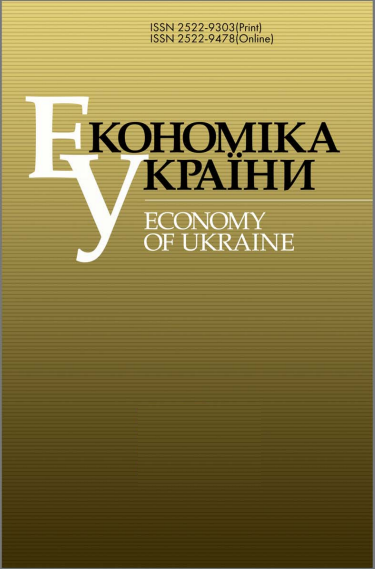PROFESSIONAL AND QUALIFICATION DISPROPORTIONS IN THE LABOR MARKET AS AN OBSTACLE TO THE STRUCTURAL TRANSFORMATION OF UKRAINE’S ENTREPRENEURIAL SECTOR IN CURRENT AND POST-WAR CONDITIONS
DOI:
https://doi.org/10.15407/economyukr.2024.02.003Abstract
The analysis of economy’s human resources revealed a number of professional and qualification disproportions and imbalances that pose threats to the structural transformation of the entrepreneurial sector and the recovery of Ukraine's economy in current and post-war conditions. In the pre-war period, they manifested themselves in: significant variations in the number and dynamics of the workforce by region; disproportions in the educational level of employees between regions; differences in employment opportunities; imbalance between the demand for workforce and its supply in terms of qualification (excessive number of specialists with higher education and shortage of workers in manual labor professions); imbalance between the number of specialists with technical and non-technical specialties; significant shortage of social sphere personnel; age disparities in enterprise staff; gaps in the formation of enterprise staff’s digital skills. The war intensified the existing disproportions and caused new ones: the imbalance between demand and supply of workforce on local labor markets deepened; the discrepancy between the number of vacancies and that of job applicants in all fields of economic activity increased significantly; considerable differences in the opportunities for employment and vocational training emerged between regions depending on their location in relation to the war zone; the already weak ties between vocational-technical and higher education institutions and entrepreneurial entities deteriorated.
Professional disproportions create staffing risks to the post-war recovery and structural transformation of the entrepreneurial sector of Ukrainian economy: the shortage of highly qualified specialists will be an obstacle to the utilization of investments, improvement of managerial, organizational, production, logistics activities of enterprises, introduction of new business organization models; the shortage of engineering and technical specialists will create a risk to broad technical modernization of production on an innovative basis; age disparities in workforce structure will hinder the attraction of foreign investments, advanced technologies and modernization of enterprises. Based on research findings, the tasks of the state, vocational education system and business in the field of human resources policy for the economy and overcoming professional and qualification disproportions are outlined.
References
Bosma, N., Content, J., Sanders, M., Stam, E. (2018). Institutions, entrepreneurship, and economic growth in Europe. Small Bus. Econ. Vol. 51. P. 483-499. https://doi.org/10.1007/s11187-018-0012-x
Galindo, M.-Á., Méndez, M. (2014). Entrepreneurship, economic growth, and innovation: Are feedback effects at work? Journal of Business Research. Vol. 67(5). P. 825-829. https://doi.org/10.1016/J.JBUSRES.2013.11.052
Lee, S. (2023). Entrepreneurship for all? The rise of a global “entrepreneurship for development” agenda, 1950–2021. World Development. Vol. 166, 106226. https://doi.org/10.1016/j.worlddev.2023.106226
Shapovalov, V. (2016). Theoretical research of the labor market`s categories. Economy and Society. No. 5. P. 122-125. URL: https://economyandsociety.in.ua/journals/5_ukr/21.pdf [in Ukrainian].
Kolot, A., Herasymenko, O., Shevchenko, A. (2023). New challenges for theory and practice of human capital in the context of the emergence of "Industry 4.0": competence aspect. Economy and Society, (53). https://doi.org/10.32782/2524-0072/2023-53-8 [in Ukrainian].
Blyzniuk, V., Yuryk, Ya. (2019). Educational and qualificational disproportions of Ukraine's regional labor market. Economy and forecasting. No. 2. P. 101-119. https://doi.org/10.15407/econforecast2019.02.099 [in Ukrainian].
Aksonova, I. (2021). Structural and dynamic analysis of the labor market of Ukraine: challenges of modernity. Economy and Society, (25). https://doi.org/10.32782/2524-0072/2021-25-20 [in Ukrainian].
Blyzniuk, V., Yatsenko, L. (2023). Problems of the imbalance of the labor market of Ukraine. Taurida Scientific Herald. Series: Economics, (16), 215-221. https://doi.org/10.32782/2708-0366/2023.16.28 [in Ukrainian].
Novikova, O., Shamileva, L., Khandii, O. (2023). Assessment of imbalance in the labor sphere under the conditions of martial law and the possibilities to overcome it. Economy of Ukraine. 66. 2(735). 17-54. https://doi.org/10.15407/economyukr.2023.02.017 [in Ukrainian].
Vasyltsiv, T., Levytska, O., Rudkovsky, O. (2022). Structural disproportions and imbalances in the labor market of oblasts of the Carpathian region of Ukraine in the conditions of war: trends, threats, orientations for stabilization policy and use of opportunities. Economy and Society, (37). https://doi.org/10.32782/2524-0072/2022-37-37 [in Ukrainian].
Downloads
Published
Versions
- 29.02.2024 (2)
- 29.02.2024 (1)
How to Cite
Issue
Section
License
Copyright (c) 2024 Publisher PH "Academperiodyka" of the NAS of Ukraine

This work is licensed under a Creative Commons Attribution-NonCommercial-NoDerivatives 4.0 International License.



